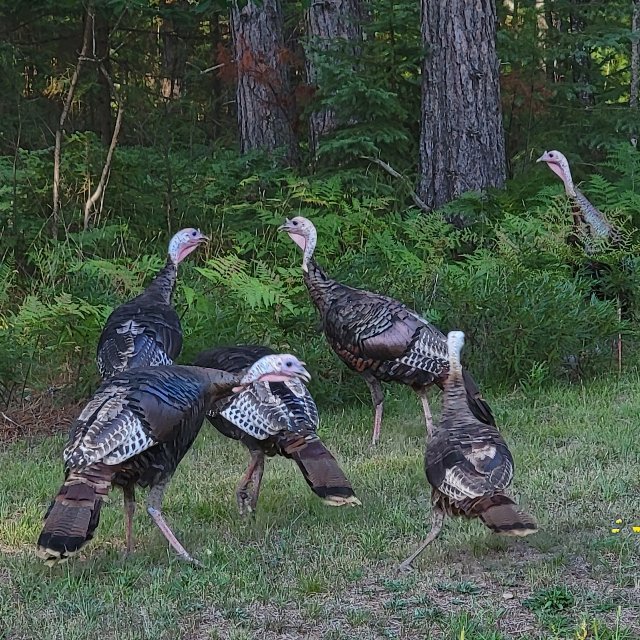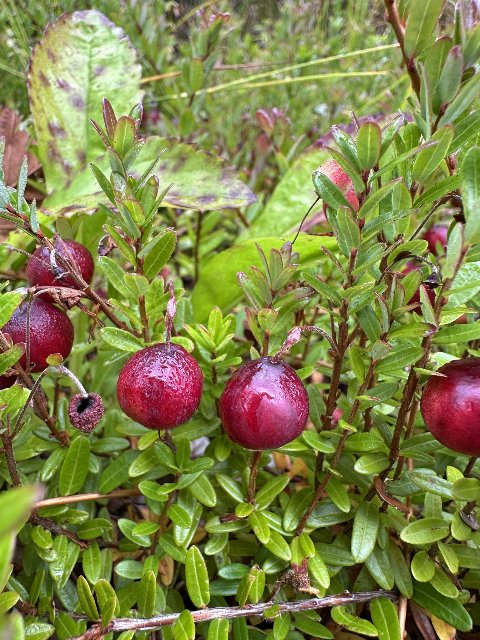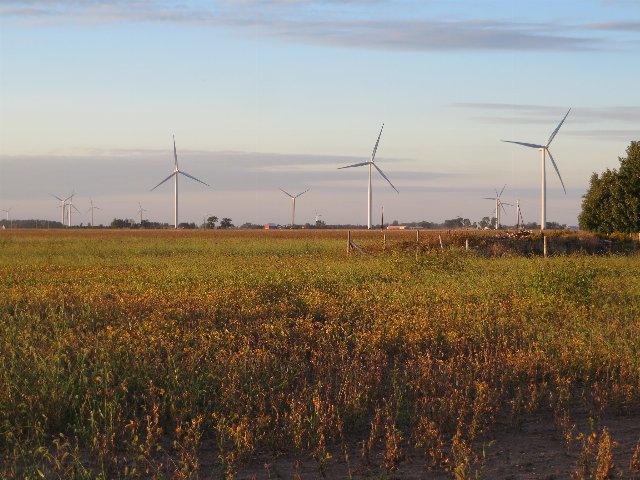Giving Thanks To Everyone We Rely On
November 22nd, 2023 by Alex Zorach
The Thanksgiving holiday is approaching in the US, and we want to take this opportunity to thank everyone who has contributed to our site, whether financially or otherwise, over the past year and since the founding of our site.These contributors include financial donors, people who have helped share our material so it reaches a broader audience, and also those who have provided corrections, bug reports, feature and article requests, and other valuable feedback. Lastly, we want to thank the numerous other organizations, websites, publications, and groups whose work we rely on, and the people who created and maintain these works.
Thank You For Financial Contributions!
As the year is not yet over, we don't have full financial results to report, and we still have quite a way to go towards our next goal, but we still have several things to give thanks for on the fundraising front. 2023 is the first year in which an appreciable number of donors returned to give a second time. Furthermore, many of these donors not only increased their contribution amount, but switched from a one-time donation to annual and/or quarterly subscriptions. These subscriptions are particularly helpful as they help us to develop a sustainable budget while minimizing the amount of effort we need to put into fundraising.We also hosted our first in-person event, a plant walk in Newark, DE, and attendees of this event generously donated $160 towards the site. These sorts of donations are especially helpful because they allow us to raise funds in the context of educational programming, again reducing our need to put resources into fundraising. We plan to host more such events in the near future.
Thank You For Sharing and Engagement!
The main purpose of bplant.org is educational: we want to provide information that will ultimately drive real-world conservation, such as protection and restoration of wild habitats and the species that depend on them, and the use of locally-native plants in landscaping and gardening. The goal is to shift human society from having a negative to having a positive effect on our environment.To achieve these goals, our material needs to reach as broad an audience as possible. And people are already helping us to do that, by engaging with and resharing our posts. As with donations, when people share our material it reduces the energy we need to put into publicizing our articles, and frees up more resources for us to work on the website itself.
In 2023 we achieved some new records; our post on yellow nutsedge (Cyperus esculentus) reached over 73,650 people and was shared a total of 188 times. These shares have real-world implications: in the case of yellow nutsedge, that species is native (by most definitions) to much of the U.S., but people expend great resources trying to eradicate it, mostly in monoculture lawns, and often without much regard to its lifecycle or habitat requirements. Yellow nutsedge can be a problematic weed in certain types of cropland but not others; it also has value to wildlife, including to turkeys.
 The wild turkey (Meleagris gallopavo) is one species that benefits from the often-maligned yellow nutsedge. Although our site focuses on plants, part of the rationale for conserving plants is that plants are the underpinning of the food web, and as such, animals depend on them. Photo © Lauren, CC BY 4.0, Source.
The wild turkey (Meleagris gallopavo) is one species that benefits from the often-maligned yellow nutsedge. Although our site focuses on plants, part of the rationale for conserving plants is that plants are the underpinning of the food web, and as such, animals depend on them. Photo © Lauren, CC BY 4.0, Source.We hope to take the energy people spend trying to control "weeds" like yellow nutsedge in lawns, and redirect it towards controlling invasives and/or protecting native plants. Related to this goal, we are also pleased that our most popular two pages on our site, both with over 11,000 people viewing them annually, are the comparison guides for Norway Maple vs. Sugar Maple, and Red Mulberry vs. White Mulberry; each of these compares a native species to an easily-confused invasive relative.
Thank You For Corrections, Bug Reports, and Requests!
Yet another way people contribute to our site is through feedback. Such contributions can take the form of corrections, bug reports, feature requests, or requests for us to prioritize certain articles or ID guides.Although we always do our best to keep our site as accurate as possible, there are still a lot of errors. The errors include typos, misinformation, omissions, and errors in plant ranges and/or native status. Over time, as people catch and report these mistakes, it helps us to improve the quality of our site as a reference for everyone. We want to thank each and every person who has sent us a correction, whether for something as small as a typo, or something as big as inaccurate information about whether or not a plant is native to a certain area.
Bug reports are also crucial. Over the past year, we fixed bugs reported by users in diverse components of the site, including glitches in the donation system, problems with the search function, broken or incorrect links, and erroneous information displayed in tables.
We also welcome requests for completing or expanding articles or ID guides. With a site of this magnitude and scope, there are literally thousands of choices of where to focus our efforts, and it can be challenging to know which tasks to prioritize. Requests from readers are one of our best guides!
Thank You To All Other Organizations, Publications, and People We Rely On!
Lastly, we want to give thanks for the many other organizations that we rely on. Our site would not be possible without the countless other resources we consult as references, and we have used so many that it is not possible to list them exhaustively. Just as plants like this large cranberry (Vaccinium macrocarpon) rely on specific habitats, in this case a bog in the mountains of North Carolina, our website relies on an ecosystem of supporting organizations, websites, publications, and the researchers, webmasters, and authors that create and maintain them. Photo © Matt Berger, CC BY 4.0, Source.
Just as plants like this large cranberry (Vaccinium macrocarpon) rely on specific habitats, in this case a bog in the mountains of North Carolina, our website relies on an ecosystem of supporting organizations, websites, publications, and the researchers, webmasters, and authors that create and maintain them. Photo © Matt Berger, CC BY 4.0, Source.Some key resources we rely on for building and maintaining our range maps include BONAP and USDA PLANTS. We also make heavy use of regional resources including Go Botany, Maryland Biodiversity Project, Calflora, Digital Atlas of the Virginia Flora, Illinois Wildflowers, Minnesota Wildflowers, and Missouri Plants, E-Flora BC, and the Flora of the Southeastern US, among others. Many of these sites also have information on habitat, faunal relationships, and identification.
A key resource we use for plant taxonomy and global range maps is POWO. For referencing garden and landscaping use we consult resources including the MOBOT's Plant Finder and the North Carolina Extension Gardener Plant Toolbox. For information about ecology and habitat, we also rely heavily on the US Forest Service's Fire Effects Information System, and for trees, the Silvics of North America. We consult Lady Bird Johnson Wildflower Center for its searchable field-based data on just about all aspects of plants, Flora of North America for detailed botanical descriptions, and NatureServe Explorer for information on the conservation status of plants. On top of this we rely on many print sources not available online, one of the most useful of which is Plants of Pennsylvania by Rhoads and Block.
A key resource we use for many different purposes is iNaturalist; we use iNaturalist for investigating user-reported data about plant distribution around the edges of their range, for connecting with people knowledgeable about plant ID and habitat, and as a massive repository of open-licensed images for use in our articles and ID guides. Two of the images in this blog post came from iNaturalist! Another resource we are grateful for for its open-licensed images, particularly for ecoregions, is Flickr, and yet another is Wikimedia Commons. Without iNaturalist, our ID guides would progress much slower, and without Flickr, our process of finding ecoregion images would also be much slower.
 This photo from Flickr is featured in our recently-published article on the Lake Erie Lowland. The photographer, Ken Lund, has generously released thousands of photos, mostly landscape photos of North America, with Creative Commons licensing. Photo © Ken Lund, CC BY-SA 2.0, Source.
This photo from Flickr is featured in our recently-published article on the Lake Erie Lowland. The photographer, Ken Lund, has generously released thousands of photos, mostly landscape photos of North America, with Creative Commons licensing. Photo © Ken Lund, CC BY-SA 2.0, Source.Over time we have also been interlinking our plant articles with more of these resources.
In addition we participate in countless Facebook groups focused on local and regional native plants, invasive plant control, plant identification and education, and ecological restoration and habitat management. These groups are key not only for helping share our material, but for gathering information and getting valuable feedback. And, like all the above resources, these groups are maintained through the hard work of numerous individuals, especially those acting as moderators and administrators.
We both want to give thanks to these organizations, publications, and informal groups, and the people who run them, and the authors and maintainers of the many books and websites we use. We also want to draw attention to these resources so that the readers of our site can discover and consult them for additional information beyond what they may find here. And we encourage those with the means to do so to also contribute to some of these other resources, as they are all immensely important, serving related purposes than synergize with our mission. For entities funded through the government and/or receiving a component of government funding, you can also write to your relevant representatives to let them know that you appreciate the resources and want to ensure that they stay well-funded and well-staffed.
Thank you to all and enjoy your holiday to those who celebrate it!
Archive of All Blogs
The Bias Against Tall Plants, November 11th, 2025
A Focus on Goldenrods (Solidago sp.), July 23rd, 2025
Disturbance and its Role in Plant Habitat Preferences, May 29th, 2025
What "Native" or "Introduced" Mean: Myths and Misconceptions, March 11th, 2025
Smarter & More Informative Search Results, January 13th, 2025
The Effect of the 2024 US Election on Plant Biodiversity and bplant.org, October 30th, 2024
The Problems With Nursery-Bought Plants, And The Solutions, October 8th, 2024
More Databases Linked & Search Improvements for Scientific Names, July 9th, 2024
Choosing The Best Common Names For Plants: Challenges & Solutions, April 19th, 2024
Range Map & Taxonomic Update Progress, January 31st, 2024
Giving Thanks To Everyone We Rely On, November 22nd, 2023
Thinking More Deeply About Habitat, April 5th, 2023
2022 Year-End Summary: Successes & New Goals, February 15th, 2023
New Databases Linked: Flora of North America & NatureServe Explorer, November 11th, 2022
All Range Maps 2nd Generation, Taxonomic Updates, & Fundraising Goal Met!, September 29th, 2022
More Range Map Improvements, POWO Interlinking, And Notes Fields, June 7th, 2022
Ecoregion-Based Plant Lists and Search, March 30th, 2022
Progress Updates on Range Maps and More, February 10th, 2022
The Vision for bplant.org, December 9th, 2021
New Server: Software & Hardware, August 30th, 2021
More & Improved Plant Range Maps, July 19th, 2021
A Control Section for Invasive Plants, April 15th, 2021
Progress Bars & State Ecoregion Legends, March 11th, 2021
Our 2020 Achievements, February 9th, 2021
Interlinking Databases for Plant Research, November 11th, 2020
A New Homepage, Highlighting Our Articles, July 29th, 2020
A False Recovery, But North Carolina's Ecoregions are Complete!, June 9th, 2020
We're Back After COVID-19 Setbacks, April 3rd, 2020
Help Us Find Ecoregion Photos, February 27th, 2020
What We Achieved in 2019, December 30th, 2019
Plant Comparison and ID Guides, October 30th, 2019
We Are Now Accepting Donations, October 14th, 2019
US State Ecoregion Maps, New Footer, Ecoregion Article Progress, and References, September 19th, 2019
Tentative Range Maps of Native Plants, August 12th, 2019
Ecoregion Locator and Interactive Maps, July 10th, 2019
Using Ecoregions Over Political Boundaries, May 13th, 2019
How We Handle Wild vs Cultivated Plants, April 16th, 2019
A Blog To Keep People Updated On Our Progress, April 8th, 2019
Sign Up
Want to get notified of our progress? Sign up for the bplant.org interest list!


